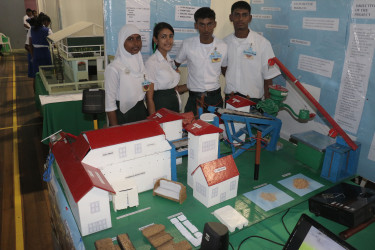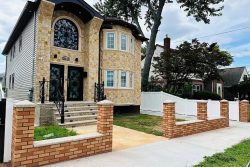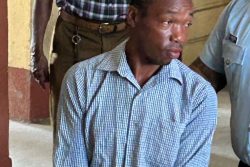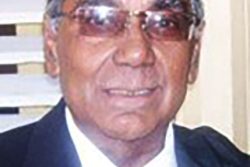Essequibo school, Abram Zuil Secondary, won the top price at the Sagicor Visionaries Challenge regional finals held recently in Tampa, Florida with their ‘Paddy Husk Particle Board’ project.
In so doing, the team will be awarded US$5000 for the upgrade of the science programme at their school in a ceremony to be held later this year when representatives of Sagicor Life Incorporated visit Guyana.
The Sagicor Visionaries Challenge is a yearly, regional competition which requires students from participating secondary schools to solve a problem affecting their school or community by developing effective, innovative and sustainable solutions using different models through Science, Technology, Engineering and Mathematics (STEM).

The Challenge resulted from collaborative efforts amongst the Caribbean Science Foundation (CSF), Sagicor Life Inc (Sagicor) and the Caribbean Examin-ations Council (CXC) all of whom collectively share the belief that, “through greater community involvement, we can live more sustainably and build a better future.” To that end, the competition’s aim is to promote sustainable communities through the use of greater local knowledge in a world that has been transformed by the effects of climate change on food, health, energy and water security.
Eight countries participated in this year’s competition namely: Antigua and Barbuda, Barbados, Belize, Dominica, Guyana, St Lucia, Tampa (Hillsborough County, USA) and Trinidad & Tobago.
The 2015 winners, the Abram Zuil Secondary School, earned the right to represent Guyana by winning the national challenge in November of last year at the Cliff Anderson Sports Hall during which 35 projects were presented.
Their brainchild, the Paddy Husk Particle Project was designed to indicate how the rice particle board can be used as a low cost, durable building material replacing the better known and more expensive Crabwood and Silverballi species, while simultaneously reducing the carbon dioxide emissions which result from the burning of rice husk, an agricultural waste product. It would thereby sustainably solve the problems experienced by the rice producing area of Region 2 which has an annual average production of 30,000 tonnes of paddy husk of which 80% is burnt as a method of disposal.
Placing second at the regional competition was Queen’s College, Barbados with their, “The Green Way to Get Styrofoam away,” which was inspired by the styrofoam containers generated during lunch and the students’ desire to not only get rid of them, but gain something useful through the process. Using a lime juice concentrate, the students were able to dissolve the containers into a reusable glue.
The Bishop Martin Secondary School, Belize placed third with their project – the use and benefits found in “Chaya”, a plant which has many healing components and nutrients.
Efforts by Stabroek News to speak to a student or teacher from Abram Zuil Secondary proved futile.
Students from the Abram Zuil Secondary made their presentation for the regional competition via video conference on June 25, 2015 at the conference room of the Ministry of Foreign Affairs. During this, they were allowed four minutes to present their project through an interactive session with judges in Barbados. The judges were selected from the Univer-sity of West Indies, Cavehill and CXC through the Caribbean Science Foundation.








